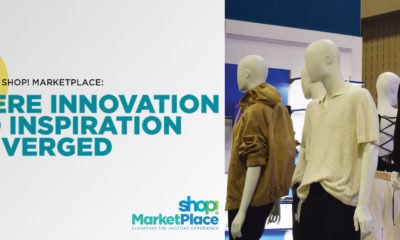Everyone loves a great story, and great stories are powerful. They can help create an emotional connection and can be memorable. Retailers took note of this years ago and began crafting retail brand stories in an effort to establish a point of differentiation from competitors, attract new customers and keep loyal ones engaged with the brand. These stories were usually around the brand (particularly if it was a heritage brand) and what they stood for or they were based around their product offering.
This “tried-and-true” approach to retail brand storytelling might be losing its luster, but a brand’s approach to storytelling could be the key to capturing the elusive Gen Z customer. As the next wave of Gen Z customers gain purchasing power, it has been documented that the group could have the largest impact on the retail industry than any prior generation. Gen Z comprises those between the ages of 7 and 22, generally born between the years 1995 and 2010, and its purchasing power is quickly surpassing the millennial population in the U.S.
How, then, can retailers shift their approach to brand storytelling to connect with the influential Gen Z customer? The answer may lie within a prominent characteristic of this generation: a competitive nature to overcome obstacles and be their best selves.
So what makes a great story?
Great stories need these basic elements: a protagonist (the hero), a purpose or goal the protagonist is trying to achieve and a superpower or special mentor that assists the protagonist in obtaining their goal. But it’s not these elements alone that create a great story. The final (and often overlooked) element of a great story is the antagonist: the negative force seeking to thwart the protagonist from achieving their purpose.
Traditional retail brand storytelling places the customer as the “audience” and the brand as the “storyteller.” The retail environment is the “theater.” With the rise of e-commerce, many retailers are losing the opportunity to tell stories because the traditional approach is best told within the physical retail space.
Advertisement
Gen Z thrives on accomplishing their personal goals and naturally identifies with those opportunities that would elevate their ability to achieve their aspirations. Shifting the role of the customer in retail storytelling as an active participant or “protagonist” offers a unique opportunity for brands to connect with and understand Gen Z customers. In order to do so effectively, retailers will need to understand the “antagonists” the generation faces that keeps them from being their best selves, including time, access, money, social pressures from unrealistic expectations, long lines, too many choices, lack of convenience, boredom and technological challenges.
By understanding the “antagonists” of the Gen Z customer, retail brands position themselves as the “superpower” or “mentor” to Gen Z that is necessary to help them accomplish their goals. This approach allows the retail brand to connect with and engage Gen Z in a variety of ways through messaging and omnichannel services that don’t solely rely on experiencing the retail environment but create an inspiring culmination of the brand’s intention within the retail store.
The retail brands that recognize the power of this shift in storytelling will be those that most successfully engage Gen Z and cultivate their loyalty.
Myra is a principal within the retail market at MG2, an architecture and design firm based in Seattle. From established global retailers to the start-up brand about to make its mark – she enjoys partnering with clients seeking to be pioneers in their industry. By always raising the bar, she seeks to foster collaborative and creative partnerships that generate successful store design and implementation. She brings a constant curiosity of consumer behaviors, brand experience and a passion to retail and architectural design projects.


 Headlines1 week ago
Headlines1 week ago
 John Ryan2 weeks ago
John Ryan2 weeks ago
 Headlines7 days ago
Headlines7 days ago
 Headlines2 weeks ago
Headlines2 weeks ago
 Headlines1 week ago
Headlines1 week ago
 Retail Buzz3 days ago
Retail Buzz3 days ago
 Headlines1 week ago
Headlines1 week ago
 Headlines1 week ago
Headlines1 week ago















